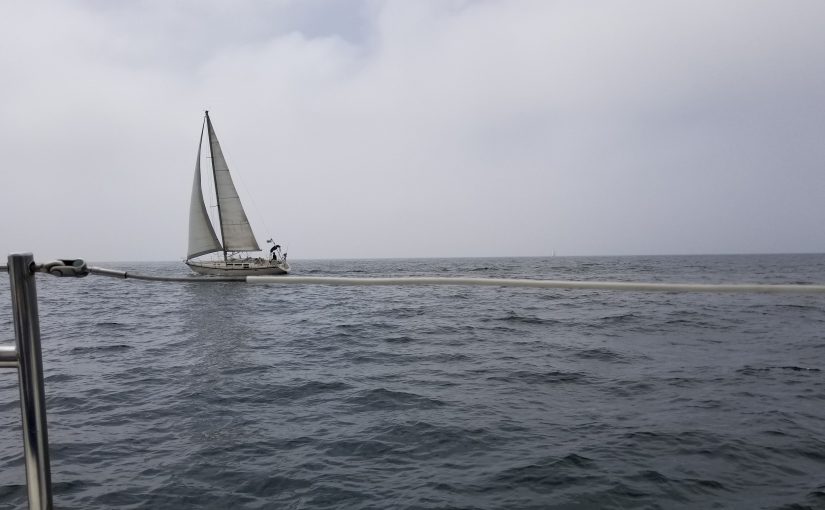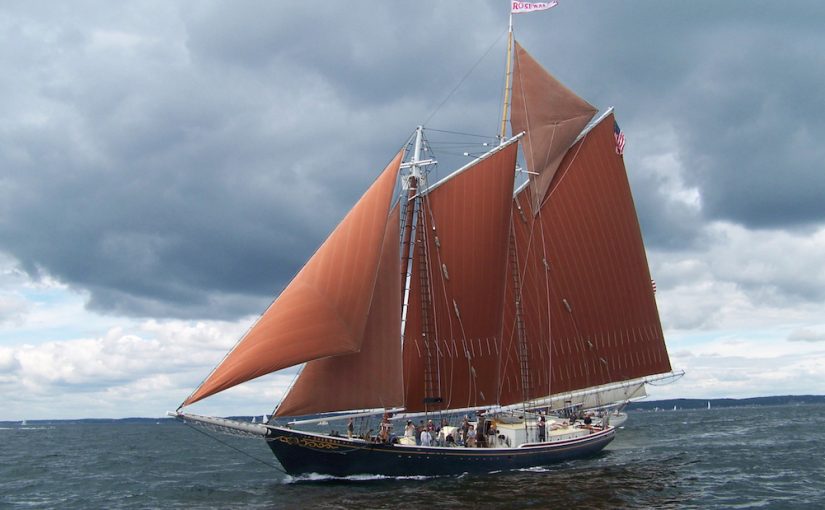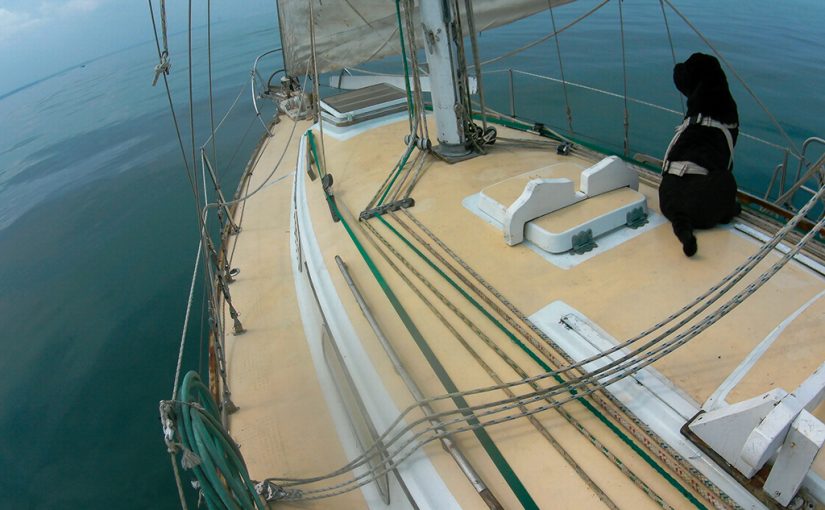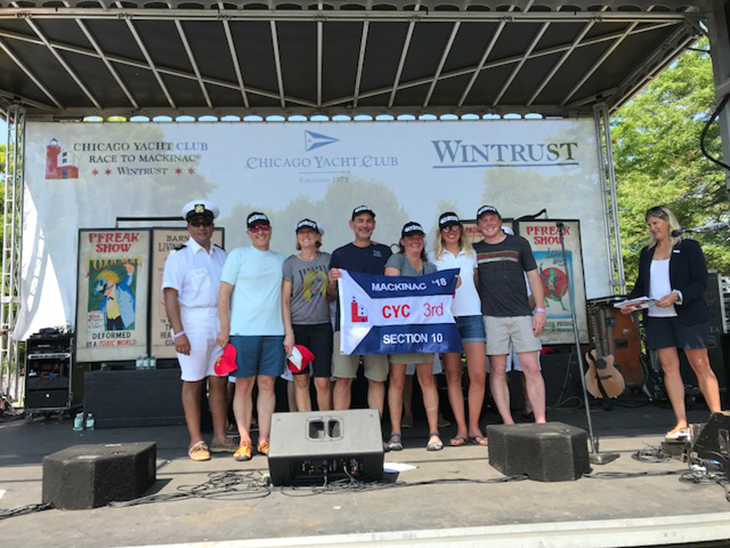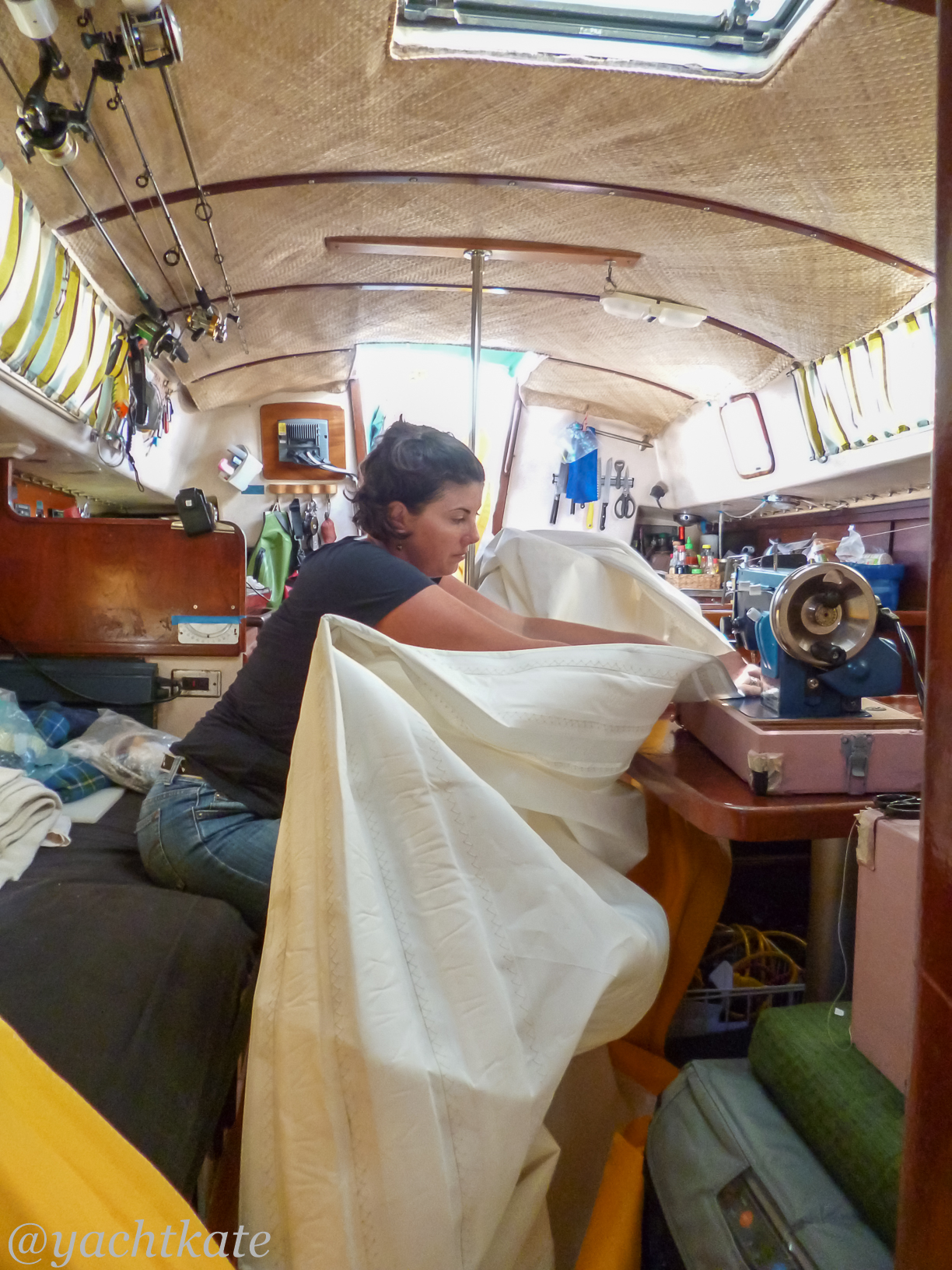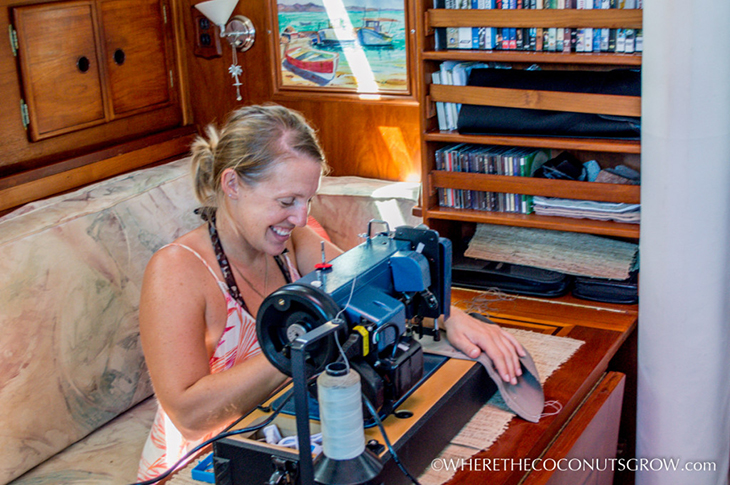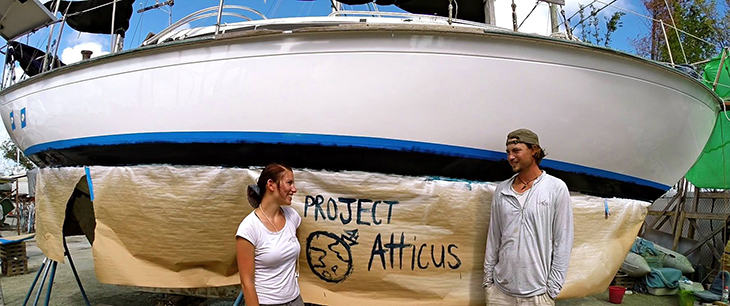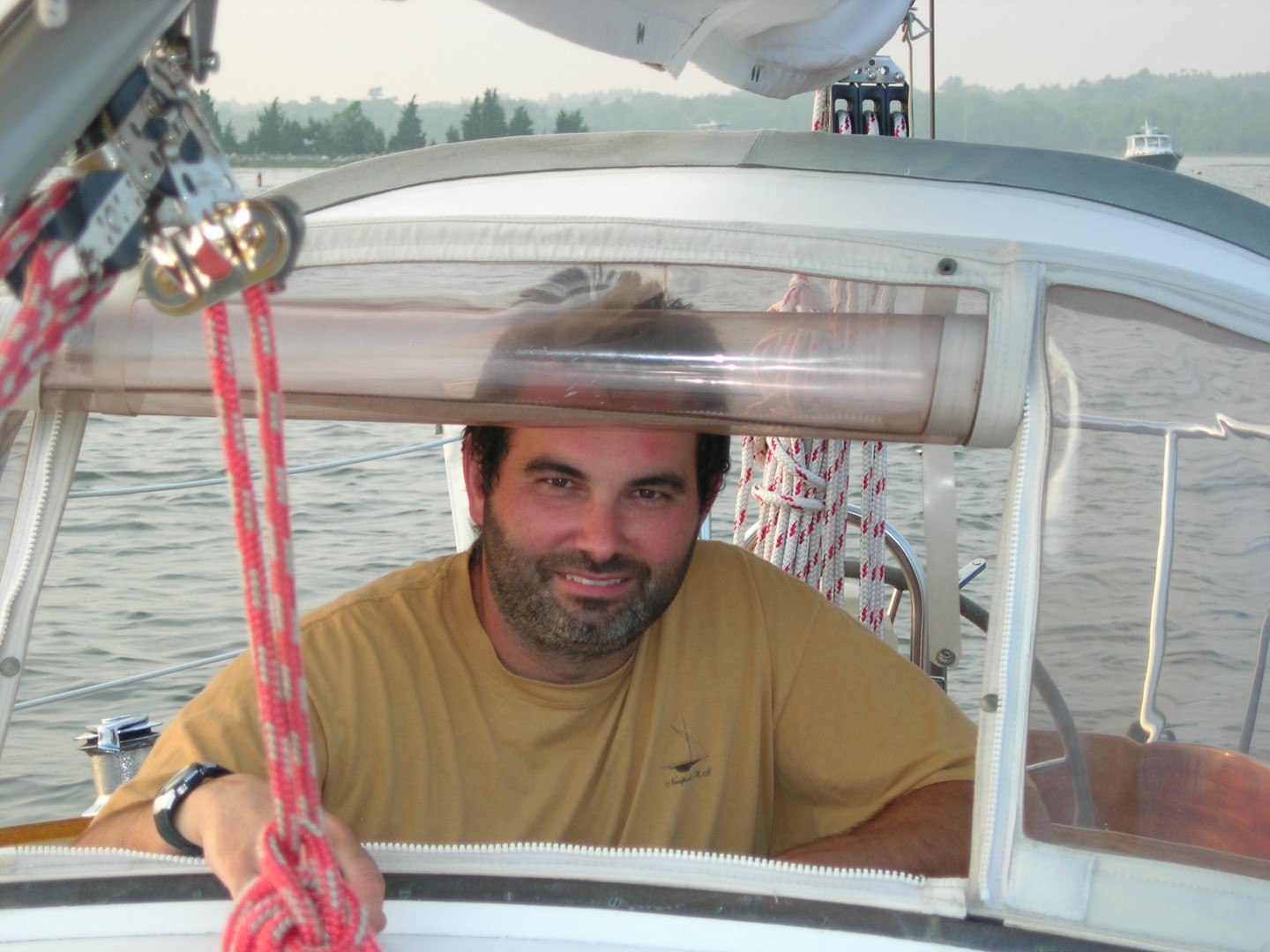The sun was rising as Bria White dragged her 60-pound sail off the side of her boat and spread it on the dock. All the while, her male counterparts looked on in dismay.
“Imagine this … as a single woman on an all-male dock, I stunned the doubting onlookers. As the sun was rising, most boaters were preparing their boats to sail, but not me. I was taking down my sail, literally off the mast.”
After examining the rips and tears, she brought out her Sailrite® Ultrafeed® LSZ and folding table and began repairing her sail. Everyone wondered how she could manage such a huge sewing project alone, but she wasn’t worried. Methodically, mending one section at a time, right on the dock, Bria worked until the sun was beginning to come down.

“Just as the doubting men returned, I was raising the finished sail. With much respect, one by one they came by to share their stories of disbelief.”
The Journey Begins
As an adventurous woman who has traveled the world, Bria has a wealth of life experiences and is a true testament to the self-reliant sailor, a trait the folks here at Sailrite are well acquainted with.
Bria has had ample experience both sailing and sewing. Along with her four brothers, she was often out on the water growing up and was also taught to sew at a young age, a skill she excelled at. In early 2000, she acquired her first powerboat at Monroe Harbor in Chicago, but she secretly wished she’d gotten a sailboat instead.
With a successful career in information technology consulting, Bria was traveling often and ultimately ended up selling her first boat. Then, just last year, Bria decided to take a leap of faith and try something she had always dreamt of doing: traveling abroad. Enrolled in a unique work-travel program, she went on a yearlong excursion across the globe. This traveling experience spurred her dream of sailing.
“Somehow I got the courage to join a program and traveled the world for one year. It was a bold thing for a grandmother to do. During my travels, I fell in love with the sea again!”

Learning the Ropes
After returning home from her trek across the globe, Bria’s first goal was to get back out on the water. She eventually set her sights on a Columbia 28 sailboat in Marina Del Rey, California. It was there that she joined the Women’s Sailing Association of Santa Monica Bay and began connecting with other female sailors and sharing her love of the sea. The Women’s Sailing Association (WSA) is a nonprofit organization that promotes women in the sport of sailing but also offers sailing and social opportunities for both men and women. After gaining hours of sailing experience by offering herself up as a crew member for many trips on monohull and multihull vessels, Bria finally felt that she had enough experience to move onto a larger boat. She now owns and operates a Catalina 30 with hopes of someday upgrading up to a Hunter 37.
As the sole proprietor of her Catalina 30, Bria has a special place on the water and has regained her sea legs. While the other women who visit her dock are simply visiting their family, friends or husbands, Bria is a single female boat owner. In fact, she’s the only female captain on her dock.
“I am the captain of my ship and responsible for the maintenance, upgrades and operation of my vessel. This is rare!” Bria went on to explain that as a grandmother, people are often surprised to find her lifting, pulling, scrubbing, repairing and docking her own 30-foot boat.

However, Bria is not alone in her adventures. As part of the Women’s Sailing Association, she has met many other members who share similar stories of “surprised looks” and shocked sailors who are simply not accustomed to women as part of the crew. Bria and her fellow female sailors are blazing the trail for like-minded independent spirits. Over time, she’s learned that sailing is all about teamwork and friendships, and she’s gathered quite a few stories from other women at the helm. She even plans to write a book capturing these incredible stories.
Sailing On
When Bria found her sail in need of repair, it was no question who would do it. Being a self-reliant sailor is simply part of her day-to-day routine. Bria has taken charge of her job as captain and set to work sewing even more projects. In addition to her sail, she has redone all the window coverings in her cabin, added privacy curtains for the staterooms and replaced weather-aged zippers on her biminis. Her next big project is to update her 1978 cushions, add trimmed floor mats and maybe even make covers for her external wood trim. On her ship, Bria’s ambitions are only limited by her determination and imagination. It also helps to have a handy sewing machine along for the journey.

“As you know, a small tear in a sail can grow very quickly. Having the portable LSZ, which can be manually operated without electricity…makes me feel safe like I can solve any problem when it arises. Besides, having one on the dock is a great way to make new friends! My fellow sailors, both men and women, give me a lot of respect for having and knowing how to use a Sailrite LSZ machine!”
To learn more about the Women’s Sailing Association of Santa Monica Bay, visit their website here.
Who We Are
Sailrite is your one-stop DIY shop! We are a passionate crew of do-it-yourselfers who strive to equip you with the supplies and how-to knowledge you need to tackle your next project. Do you want to learn upholstery, leatherwork, canvaswork, hobby sewing, bag making or more? We have the fabric, tools, hardware, sewing machines and notions you need to master any DIY. And even if you’ve never sewn before, our tutorials and how-to videos are designed for beginners and experienced crafters alike.
Start your DIY journey today: www.sailrite.com

